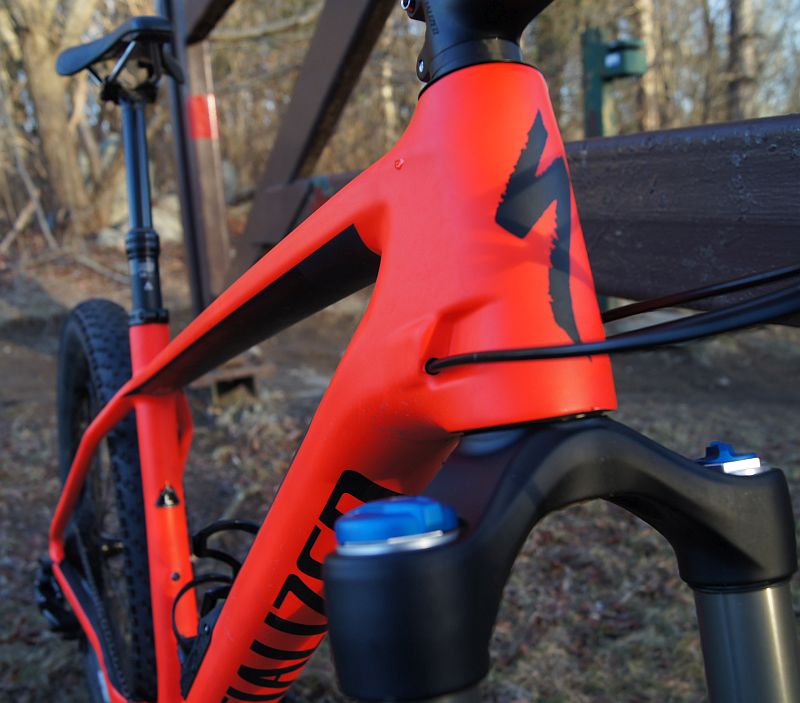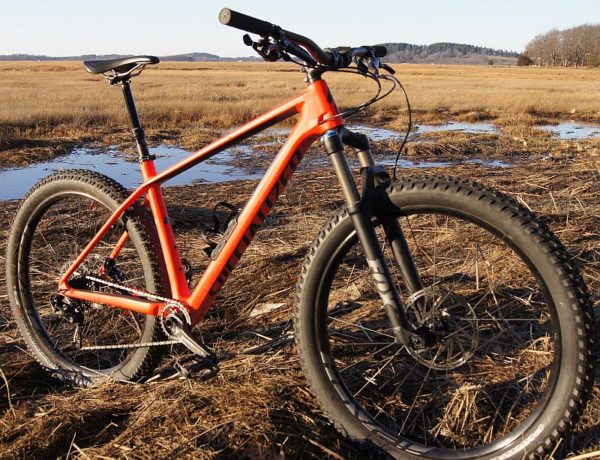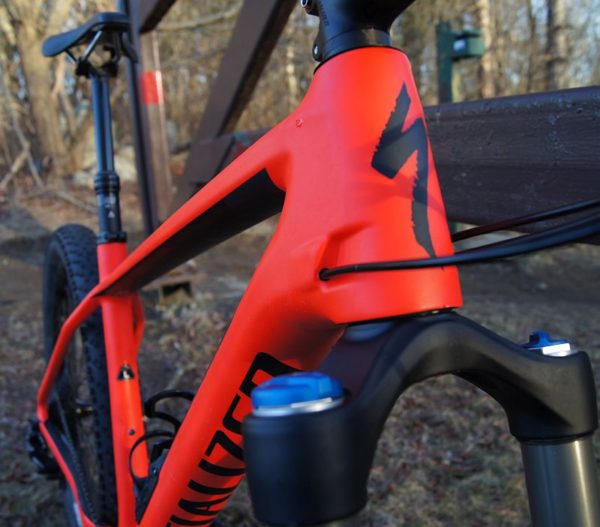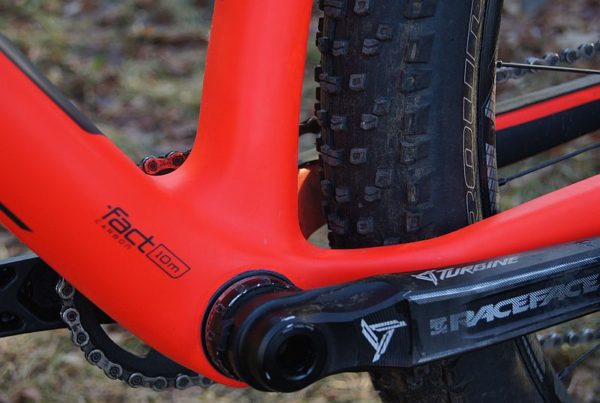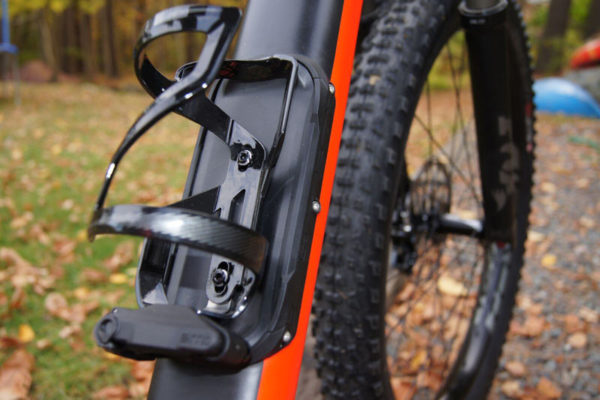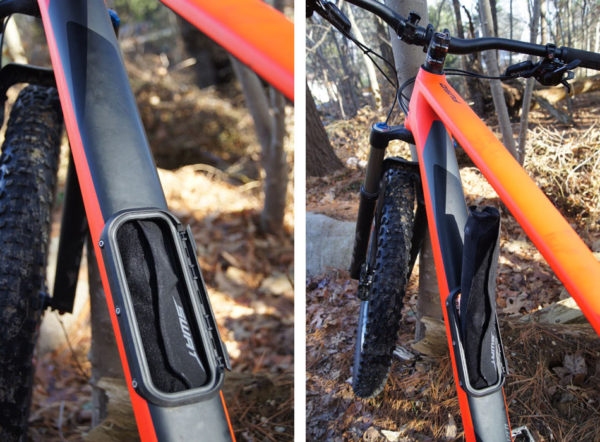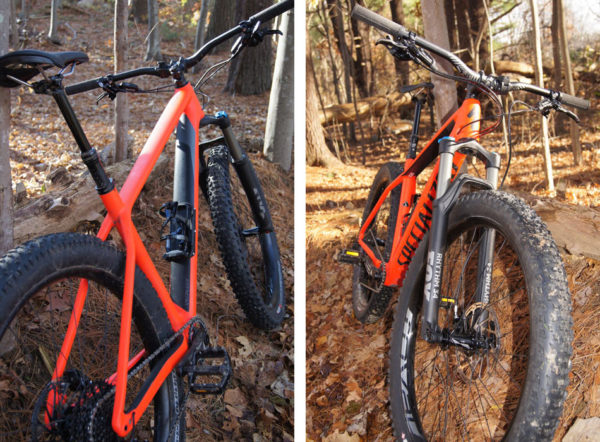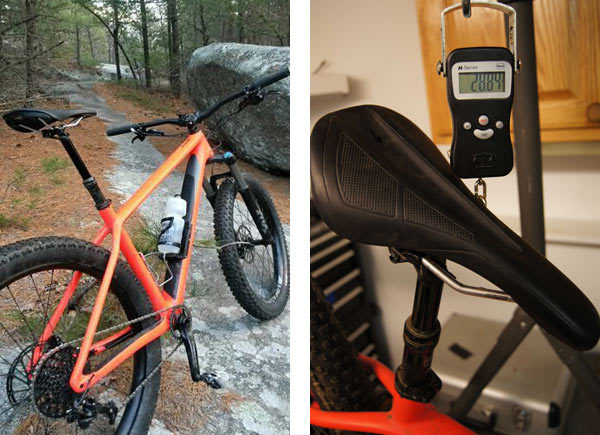Specialized has peppered it’s lineup with “Plus” bikes, and its Fuse lineup is helping bring new life to the hardtail by combining trail bike nimbleness with near fat bike traction. Using modern trail bike geometry and a dropper post, the Fuse rides a lot like a small-travel full suspension rig. I didn’t expect to be this smitten over a hardtail, but I’ve been all grins for the last two months on the 27.5+ Fuse…
Many companies are now offering 27.5+ bikes via the Boost standard, and the plus-sized tires make a lot of sense for a hardtail. The extra tire volume softens the ride nicely, taking the edge off small hits. It had been years since I ripped dirt on a hardtail, and I was worried I was in for sore muscles and chattering teeth. But I’ve spent a lot of saddle time on the plus-sized Fuse, without any issues. The carbon frame also adds to the forgiving ride. Overall the Expert Carbon 6Fattie is comfortable, well spec’d, uncomplicated, versatile, and super fun.
The Fuse is available in aluminum or carbon frames, with several build options. The $3,500 Expert Carbon 6Fattie test bike shares the same high-end carbon frame as the much pricier S-works option ($6,500). Both have Specialized SWAT (frame storage and tools), and Command Post IRcc dropper post. The Expert Carbon tested is built up with Race Face cranks and SRAM X1 drivetrain, SRAM Guide R brakes, and a Fox Rhythm FLOAT 34 (120mm with Boost thru-axle). Internal cable routing and bright Nordic Red paint make the wide frame that much more noticeable, and looks to be well designed for strength and vertical compliance. Much of the build is house brand, with Specialized bars, stem, saddle, grips, and tires, helping keep a good smiles per dollar ratio.
The SWAT (Storage, Water, Air, Tools) frame door and integrated tools might seem gimmicky, but are really well designed and useful. It’s nice knowing that on every ride you have a metric wrench (set below the cage), and chainbreaker (in the top cap of the stem) handy, and I thoroughly enjoyed pack-free riding. I ran a water bottle (remember those?) and extra tools strapped to the cage, and a tube and pump stowed inside the frame. I was surprised by all the storage space inside the downtube compartment, where one could alternatively cram in a thin rain shell and a tightly rolled burrito.
The Specialized Command Post IRCC isn’t the smoothest dropper I’ve tried, but it works fine, and just having a dropper maximizes the Fuse’s trail bike potential. The post’s under bar remote paired well with the X1 SRAM shifter on the other side of the bar (so well I tried to shift gears with it a few times ). There was some stiction on very cold rides (well below freezing), but Specialized has a winter tune kit, so diehard Northern riders should be covered.
The Specialized 38mm Roval Traverse 650b alloy rims held up remarkably well, especially considering the questionably low tire pressure I was running. I’m 170lbs, and often ran 10 psi in the back, which supplied oodles of traction, but could easily bottom out on bigger hits and make that horribly expensive sounding “ping”. I had started with 16 psi in front and back, but found the rear wheel bounced off the many small hits. Lowering the pressure way down fixed the bounce, but I’ve since compromised on 12-15 psi for most rides, with 16-20 psi in the front. Setup for tubeless, pinch flats were never an issue, and the rims are somehow still running true.
The Fox Rhythm FLOAT 34 paired well with the 3” Ground Control tires, providing predictable steering, and matched well with frozen trails of late fall and winter in coastal New England. It’s impressive the overall absorption that a 120mm front suspension provides, allowing me to hit jumps I’d have regretted on my fully rigid fat bike.
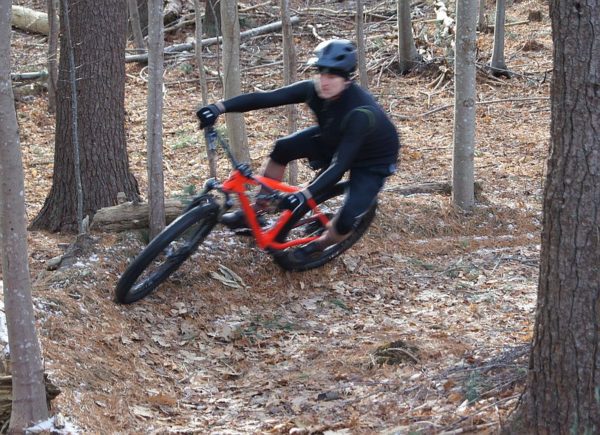
With a modern 67.5º head angle and low slung bottom bracket, the Fuse liked to go fast. Without rear suspension, I was often glad to have the 200/180mm rotors of the SRAM Guide R brakes. Even with the big rotors, I occasionally needed 2 fingers on the brakes, to reign in the Fuse and it’s big wheels. I got myself in trouble once or twice, forgetting the Fuse was a hardtail. Steep rock garden descents had the bike, my legs, and the rest of me, all bouncing out of sync, and on the edge of control. But for everyday trail riding, once limits and a safe word were established, the Fuse became my new bestie.
Almost 29 pounds (without pedals) isn’t light for a carbon hardtail (size Large), but not bad considering the Fuse’s trail bike intentions. It’s the trade-off for the extra traction and stability of a plus-bike. The high volume 27.5+ tires tend to bob a bit under hard pedalling, which makes them feel inefficient, and so the bike’s weight feels noticeable on long uphill slogs. While I’m not convinced that 27.5+ tires are really any less efficient than skinny 29” tires, they do feel slower. So, whether deserved or not, long fire road climbs felt longer. However, with extra traction, I could clear more steep climbs with less dabs. On a dry fall day, I rode my neighborhood test loop in record time, cleaning all the short punchy climbs and technical bits.
I had almost forgotten how snappy a hardtail is. Even with its tall wheels, the Fuse manuals and hops well, without any rear suspension to preload before the hop. The Fuse is a great bike for getting one’s bunny hop groove back after many years of clipless laziness. I often ran flat pedals for rolling jumpy trails, or for technical slow speed trails. When I wanted to turn faster loops, I switched back to clipless for efficiency and powering up steep sections. With a lot of granite “slickrock” in my area, the spiderman grip and stability of plus-bike tires let me climb crazy steep rock faces, setting a new standard for out of saddle traction. And despite the tall wheels, cornering was good, thanks to relatively short chainstays and the dropper post which allowed more room to lean the bike over.
Like other low slung trail bikes, pedal strikes were more frequent, but manageable. The only other adjustment to my riding style came from the wide, flat, top tube, which my knees occasionally bumped. Overall though, it’s a comfortable cockpit, with fairly wide 750mm bars and short-ish 60mm stem.
The Fuse packs a ton of fun in a versatile and budget friendly package. I saw (and passed) a lot of fat bikes on frozen but not very snowy trails. It wasn’t until late winter that two big snowstorms ended the season for the Fuse. In the spring I’ll occasionally wheeze through a few local XC races, and with some light 29er wheels, the Fuse would be race ready. Summer bike-packing with the family, check. And that trip to Knoxville in May… in other words, the Fuse is a jack of all trades (master of fun), and for me comes very close to the one bike dream, where I could grab the Fuse for just about any ride all year.
